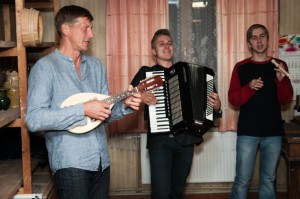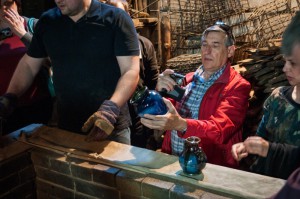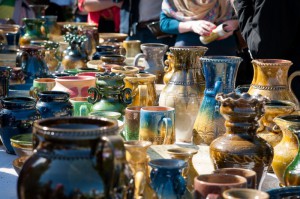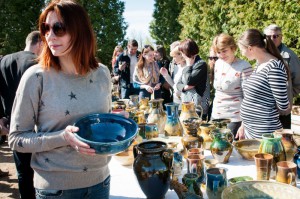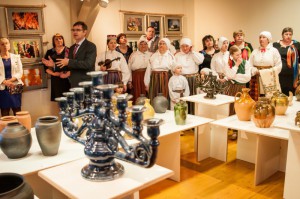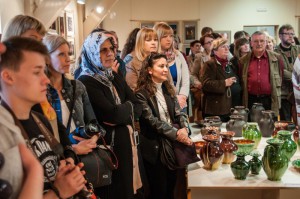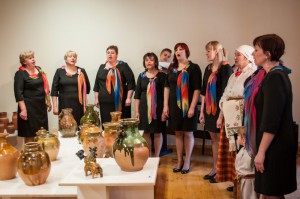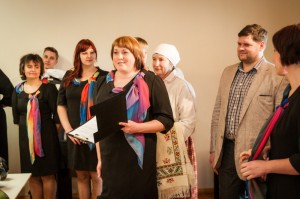Nowadays of Latgale potters
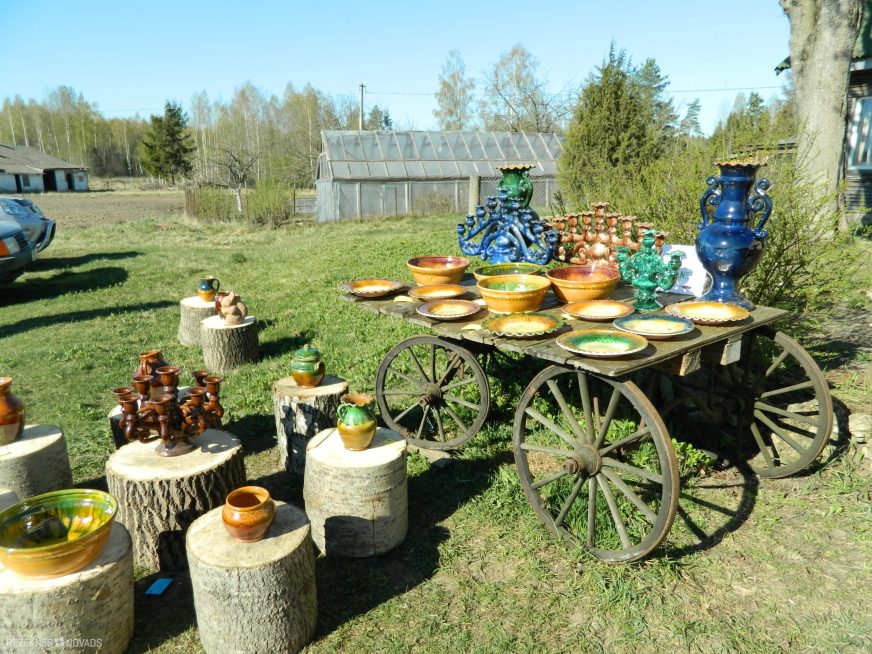
“Seven hectares of candles!,” “– in his poem, the Grand Master of Latgale's ceramic, Andrey Paulane,” said Rogovka poet Anton Kokoy. The same grand sensation came at the closing exhibition of Latgale's pottery days in Franz Tradog's museum “Colnasate”, where it was possible to look at the now strongest devumu of Latgale potters, both brightly glazed and warm and deep-black pots, vases, candles and plates. The exhibition was successfully complemented by the photographic exhibition “fire”, which was the subject of a clay-shaped process. In the spring of this spring, for thirty-fourth time, Latgale podiers' biscuits became small energy centres that gathered around themselves and long-distance stakeholders, confirming that Latgale ceramics is and remains one of the most brightest signs of Latvian cultural identity. “Latgale Podnieku Day - 2014” was organized by the municipality of Rezekne, Latvian National Cultural Centre, the People's applied art studio “Rēzekne county pudnamki” and the Latgale cultural history museum.
The main hat of the pottery days was burned IN Griškānu parish “Muoldejun”, at Andra Ushpeal, the famous representative of the Ushmouse podnieks. The burnt of the baker – it is almost a mysterious and ritual process – was felt by everyone who had arrived at the Muoldejun on the evening of 25 April, waiting for not only smoke, but also flame tongues. As the landlord Andris Ushmis told, there are 150 works in the bakery, which are both older and middle-class masters, Anton, Andra, Aivars and Holy Ushpeu, Stanislava Vilnius, Raivo Anderson, Yolantas and Valda Dundenieks, Jolantas, and the darinājumi of the new, emerging masters. “Around 9.00 in the morning.” The hat is usually approximately 10-11 hours, but given that it has not been incursed for a long time, the warm-up process will be run longer. Well, we can see that red flames appear. Everything is happening. The participants of the photographer, “fire miracle”, were locked in their cameras, so as they were joked by the podiers themselves, they would be the most enriched podiers throughout their lifetime. Moreover, this year, a special booklet dedicated to Latgale pottery-day traditions (publisher -- Latvian National Cultural Centre, compiler – Andris Ušpelis), in which information is collected in Latvian, English and Russian on Latgale ceramics and currently active studies and clusters.
On the same day, Griškānu parish in Niperova's black or reduced ceramic hat was opened by a potter Juris Crompan, while a cultural educational seminar “Virtual Museum: Latgale ceramic aspect” could participate in the museum of Latgale cultural history, the “virtual past of the EU cross-border cooperation project — the future of museums”
The practical podation in Latgale has been cultivated over several thousand years, but how persistent will this tradition be when the kitchen clay pot and the bowl no longer take such a place as a hundred years ago? The work of ceramics shows, however, the opposite – unique handsets, clay dishes that keep the energy of fire and Latgale, are still topical and even modern. Moreover, Latgale podiers – Stanislav Vilnius and Viola Bīriņa, Peter Gailums, Victor and Tatjana Pankovi, have taken part in a very unusual, technically complex and massive work – the restoration of the Bauska Palace oven. AS part OF THE ERDF project, it is intended to restore eight ovens in the new palace of Bauska, each of which differs in terms of both colour and style, but the characteristic features of the 16 th – 17 th century must be preserved. As Stnislav Vilnius said, just on the eve of the podiers, another oven was traveled to Bauska for one furnace. The project contains three rules that are mandatory, -- the pods must be made by hand, the original templates, the burned pit-type wood in ovens, glazed with lead glazer made by ancient methods, just as the Latgale pottery old man did. Stanislav acknowledges that the most difficult thing is to find an appropriate tone for glazer. “As if the components are known, but it is necessary to catch the true proportions of the pigments, repeat what the ancient masters found. It must be made up, burned, then compared with the ancient original found in the archaeological excavations. '
The power of the podation is inherited from generation to generation, so that the dynasties of the podiers can be spoken up to today. Also, next to Andra Ushpeel's hat, a splendid boy is playing, Matthias will soon be three. Would his father want his son to continue his family? “I don't know when we're going to grow up, then we'll look.” I liked my father not to give it to me for a moment, my brother and sister have tried, but have not chosen it as a position. It would be pleasant, of_course, if there was a Ushpelis sixth, like Richard VI in England. But we'll see! It must be acknowledged that society and time change, as the professions are changing, what they need is suddenly unnecessary, but i think that the clay will remain. “I don't know how, but surely stay,” says Andris Ushmis.
Anna Rancāne
photo: Eduards Medvedev
